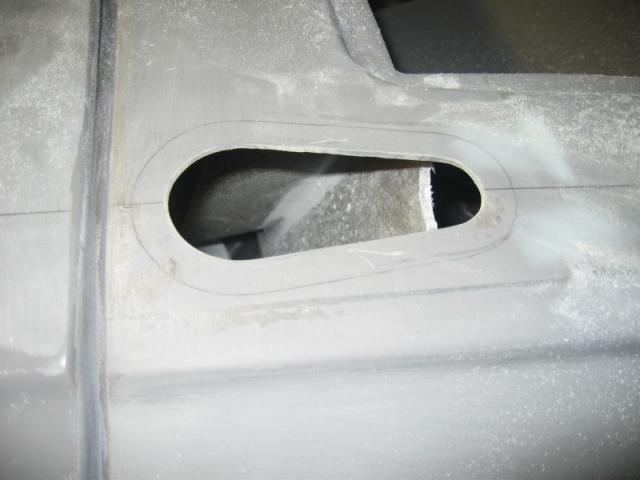I spent the better part of two weekends with my brother last summer tweaking the fitment of the spyder and front clip, but nothing really picture-worthy. The mental Performance hinges changed the geometry of the front and rear clip mounting, so a lot of unsung work was done to get it right. More fitting, sanding, tweaking, removing, glassing, sanding, tweaking and refitting. I also enlisted a friend's help in refitting the rear clip with the new hinges. Everything lined up great when we finally drilled the holes in the repaired fiberglass for the new hinges, but then I noticed that the rear clip was not sitting flush on the body locating cones. More sanding, drilling, fiberglassing, re-drilling, sanding, and filling to get it fixed, but now it's done. Again, no pics from that exercise but many hours spent.
Still working on the rear clip. Next task was to find some acceptable latches for the rear clip to supplement the two latches that are often left open by overly exuberant GT40 owners. So a few weeks ago I ordered some Aerohinges from Coast Fabrication. I ordered the flush-mount variety because I'm a glutton for punishment. Hey, what's a little more fiberglass work? Here we go...
The Aerocatch latches come with cut-out templates that are used to mark the material to be gut. I decided to mount mine "backwards" on the rear clip in the same orientation as my Gurbey bubble. After checking to see if there would be adequate clearance for a bracket under the rear clip to catch the pin (there appears to be), I used the supplied templates to mark the location of the catches, drilled some pilot holes, and got the cut close with a jigsaw. Then I carefully used a carbide cutter in a die grinder and sanded to final shape. Here it is from above.

There's a bulkhead below that needed to be notched to allow the catches to be installed. Also, because the fiberglass body work is thicker than sheet metal for which the flush-mount Aerocatch is designed, I also had to carefully use the die grinder and a finish sander and hand sanding to grind down the thickness of the fiberglass from the inside of the rear clip. Nasty, tedious work, with glass fibers flying everywhere. Here's a view from underneath that shows what I'm talking about:
After I was satisfied with the fit of the latch in the rear clip, I cut out three progressively larger rings of matt fiberglass for each latch:
Then I got the garage nice and toasty, ran a bead of 3M 5200 around each mounting flange, then glassed them in.
May God help me if I ever need to remove or replace one of these bizznatches.































